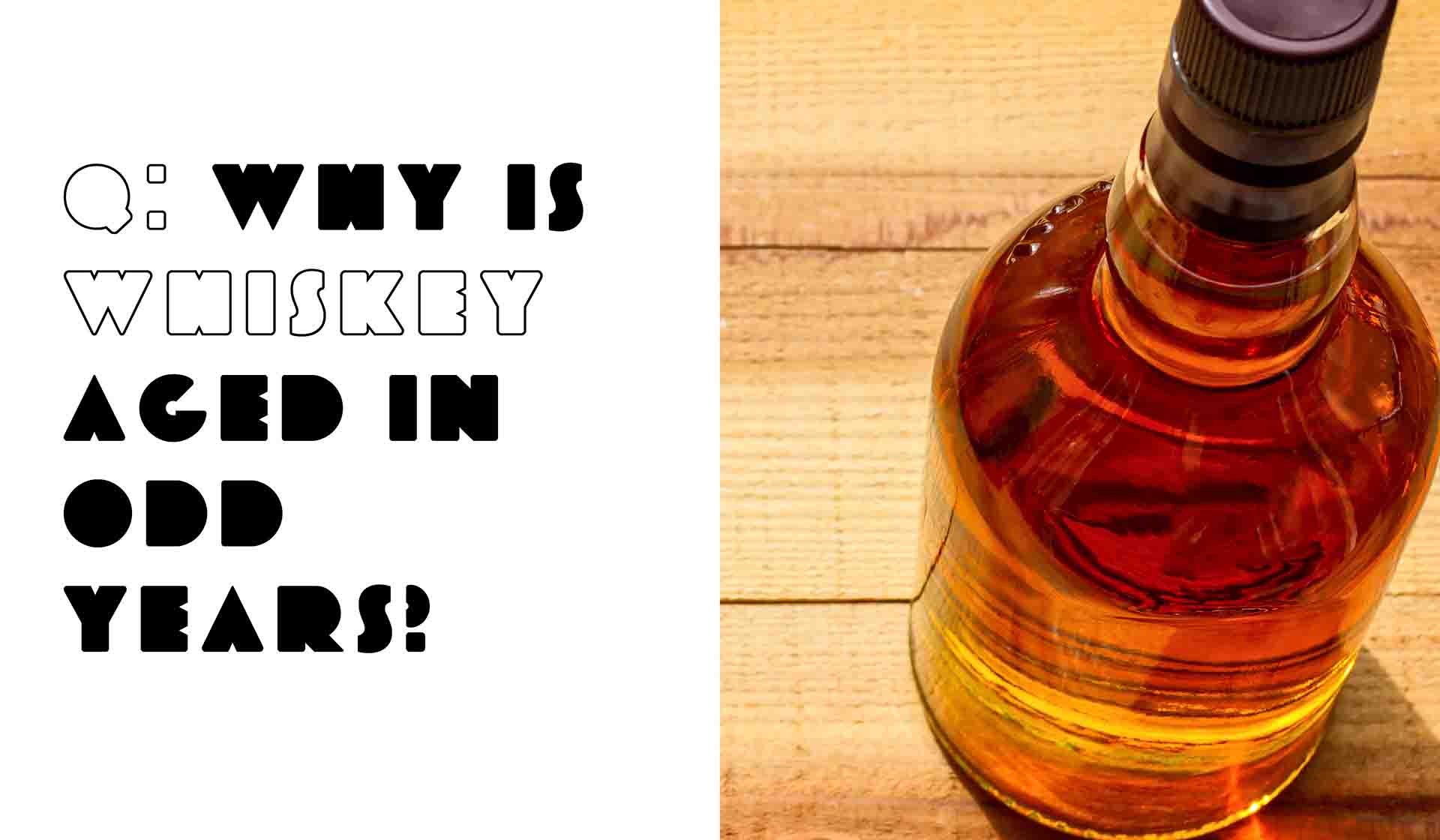Why Is Whiskey Normally Aged in Odd Years?

Whiskey is a distilled alcohol beverage that must be aged to achieve its peak flavor. While you can drink it straight out of the distillery, you won’t get to enjoy the rich flavor you’ve come to love about a whiskey drink.
There are a number of factors that determine how a whiskey will taste and how well it will rank among whiskey lovers. Getting to know which factors are involved in whiskey-making can help you become your own whiskey master if you plan on bottling your own brand of whiskey.
Many whiskeys are aged for an odd number of years, namely 12 or 18 years. However, age may be nothing more than a number when it comes to whiskey experts.
The whiskey-making process
Whiskey is made of grains, typically barley or rye or a malted version of these grains. Whiskey can also be made from grains like wheat and corn.
These grains are boiled in water to draw out their natural starches. Malted grains are first germinated and then dried. The malt is then grinded down and the husks and other materials are removed.
The ground malt is then added to warm water to form the mash. The mash and water are then heated to extract the natural sugars of the malted grains. The wort, the remaining liquid, is then cooled and placed into wooden barrels. Commercial companies may also use stainless steel tanks for the fermentation process.
To start the fermentation process, yeast gets added to the wort. The yeast converts the sugars into alcohol over a period of 48 hours. The liquid is now known as a wash. It contains considerably less alcohol than the finished product.
The wash is then placed into a distiller where heat will help to remove impurities from the liquid. The alcohol vapors are collected, which become the final whiskey product. Whiskey is distilled several times to ensure all impurities are removed.
At the beginning of the distillation process, the liquids produced have a very high alcohol content. The liquids produced at the end of the distillation process are very weak. It is the alcohol collected from the middle of the distillation process that is used as the final whiskey batch.
The whiskey aging process
Once the distillation process is complete, the whiskey spirit is stored in oak casks and allowed to mature for a minimum of three years before it can be characterized as whiskey.
During the maturation process, the whiskey begins to form its own unique characteristics, including its flavor, color, and aroma. The wooden casks are porous and they draw in the air from the surrounding storage area. This means each whiskey product takes on characteristics of its environment, which influences each whiskey differently.
Each year whiskey is stored, it loses about 2% of its alcohol content through the process of evaporation. For this reason, older whiskey casks have less to bottle and are less readily available. These whiskeys are also more expensive to purchase.
Why does the age of whiskey matter?
The longer whiskey is allowed to sit in its wooden cask, the more characteristics of the wood and the environment it will absorb. As these factors influence the taste and aroma of whiskey, some people prefer their whiskey to be aged longer.
Many high-end whiskeys have been aged between 10-20 years. One of the oldest whiskeys in the world was aged over 70 years.
There are some whiskey aficionados that feel age doesn’t matter as much as other factors. As long as the whiskey has aged long enough to develop a woody flavor from its storage cask, it can be aged enough to be enjoyed.
Different locations also affect rates of maturity. Many American-made whiskeys are aged for at least five years. In Ireland and Scotland, the cooler temperatures cause maturation to take longer, usually at least 10 years.
While age is important for whiskey flavor, there is also the possibility of the alcohol becoming overaged. When whiskey is sitting in its cask for too long, its taste can turn bitter and unpleasant. The same is true when whiskey is stored in poor quality casks.
Preparing the casks
Some high-quality whiskey makers take particular care in preparing their casks before storing any liquids. White oak casks are most popular for whiskey maturation. Many allow the wood to air-dry for a length of time before the liquid is stored. Some whiskey manufacturers also take great pains to toast the inside of each cask to ensure their whiskeys will attain a gorgeous, caramel color.
If you’ve decided to make your own whiskey brand, cheers! It can be a very rewarding endeavor, provided you have the patience to see the process through to the end. Once your whiskey has been distilled and aged, it is vital you have the right kind of spirits bottle available at BottleStore.com along with a tight-sealing cap to ensure high-quality flavor.
https://www.smithsonianmag.com/smart-news/heres-what-happens-when-you-age-whisky-180957440/
https://en.wikipedia.org/wiki/Whisky
https://www.gq.com/story/why-your-whiskeys-age-matters
http://www.slate.com/articles/life/luxury_explainer/2012/12/starting_a_new_whiskey_company_how_long_do_you_have_to_wait_for_your_spirits.html
